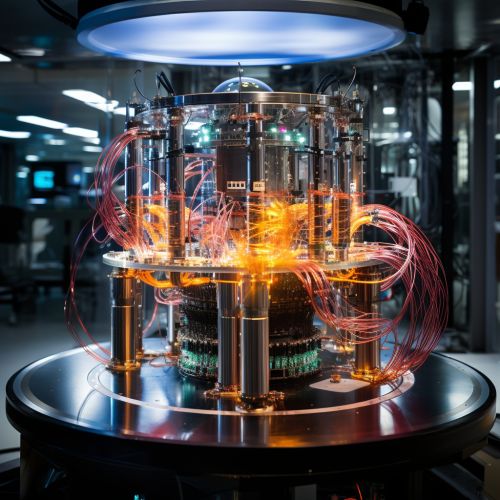Quantum Algorithms for Topological Data Analysis
Introduction
Quantum algorithms for topological data analysis represent a novel approach to analyzing data using the principles of quantum computing and topological data analysis. This approach leverages the inherent capabilities of quantum computing, such as superposition and entanglement, to process large amounts of data in a highly efficient manner. At the same time, it uses the principles of topological data analysis to extract meaningful information from complex, high-dimensional data sets.


Quantum Computing
Quantum computers operate on the principles of quantum mechanics, which is a branch of physics that describes the behavior of particles at the smallest scales. Unlike classical computers, which use bits (0s and 1s) to process information, quantum computers use quantum bits, or qubits, which can exist in a superposition of states. This allows quantum computers to process a vast number of computations simultaneously, making them potentially much more powerful than classical computers for certain tasks.
Topological Data Analysis
Topological Data Analysis (TDA) is a method used to analyze complex, high-dimensional data sets. It uses the principles of topology, a branch of mathematics that studies the properties of space that are preserved under continuous transformations. TDA allows for the extraction of meaningful information from data sets that may be too complex for traditional data analysis methods to handle.
Quantum Algorithms for Topological Data Analysis
Quantum algorithms for topological data analysis combine the principles of quantum computing and TDA to analyze complex, high-dimensional data sets. These algorithms leverage the computational power of quantum computers to process large amounts of data, while using the principles of TDA to extract meaningful information from this data.
One of the key advantages of quantum algorithms for TDA is their potential to process large data sets more efficiently than classical algorithms. This is due to the inherent capabilities of quantum computers, such as superposition and entanglement, which allow them to perform multiple computations simultaneously.
Another advantage of these algorithms is their ability to handle high-dimensional data sets. Traditional data analysis methods often struggle with high-dimensional data, as the complexity of the data can make it difficult to extract meaningful information. However, TDA is designed to handle this complexity, making it an ideal tool for analyzing high-dimensional data.
Applications
Quantum algorithms for topological data analysis have a wide range of potential applications. These include, but are not limited to, the following:
- Bioinformatics: These algorithms could be used to analyze complex biological data sets, such as genomic data, to identify patterns and relationships that could be used to understand biological processes or diseases.
- Machine Learning: Quantum algorithms for TDA could be used to improve machine learning algorithms, by allowing them to process large amounts of data more efficiently and extract meaningful information from complex, high-dimensional data sets.
- Network Analysis: These algorithms could be used to analyze complex networks, such as social networks or the internet, to identify patterns and relationships.
Challenges and Future Directions
While quantum algorithms for topological data analysis hold great promise, there are also several challenges that need to be addressed. One of the main challenges is the current lack of large-scale, practical quantum computers. While significant progress has been made in the development of quantum computers, they are still not widely available or practical for most applications.
Another challenge is the complexity of developing quantum algorithms for TDA. These algorithms require a deep understanding of both quantum computing and TDA, and developing effective algorithms can be a complex and time-consuming process.
Despite these challenges, the field of quantum algorithms for TDA is rapidly evolving, and there is significant potential for future advancements. As quantum computing technology continues to advance and become more widely available, it is likely that the use of quantum algorithms for TDA will become increasingly common.
